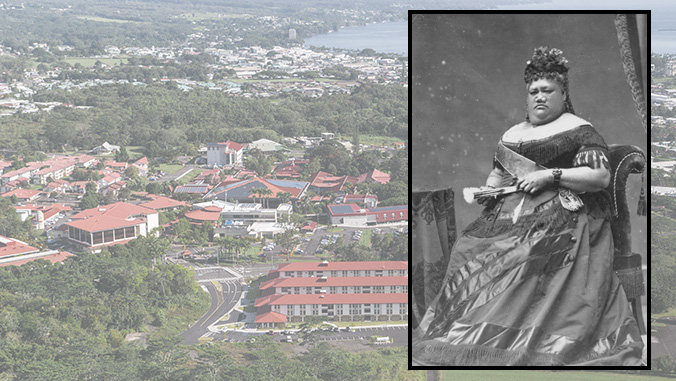
In celebration of Mahina ʻŌlelo Hawaiʻi (Hawaiian Language Month), Ka Haka ʻUla O Keʻelikōlani College of Hawaiian Language at the University of Hawaiʻi at Hilo will host a webinar to share knowledge about the college’s namesake, Princess Ruth Keanolani Kanāhoahoa Keʻelikōlani.
Established in 1997, Ka Haka ʻUla O Keʻelikōlani was named in honor of the high chiefess known for her strong advocacy of Hawaiian language and culture. She refused to speak English, practice Christianity, and held fast to traditional Hawaiian practices. Her example and legacy are inspirational to people who now strive to learn and use ʻōlelo Hawaiʻi, the state’s native tongue.
The online event, Ke Aliʻi Wahine Kanāhoahoa Keʻelikōlani is free and open to the public, and will be held on February 9 at noon.
- Zoom link. Passcode is ukana2.
Lito Arkangel, a lecturer of Hawaiian studies and music at the college, will hone in on the princess’ life, and her notoriety as a formidable presence in nineteenth-century Hawaiʻi. Arkangel is also an instructor of ethnobotany who serves as a mea mālama kīhāpai ʻo Ululaumāhie (caretaker of the gardens named Ululaumāhie) at Hale‘ōlelo, home of the college.
He Ukana Kā Kīlauea webinar series
The upcoming webinar event is part of the He Ukana Kā Kīlauea webinar series presented by Hawaiʻi Papa O Ke Ao, a group comprised of representatives from each of the 10 UH campuses throughout the state and tasked by UH President David Lassner to create activities in support of UH being a leader in Indigenous education. The webinar series acknowledges and celebrates the leadership accomplishments of aliʻi through historical accounts, stories and songs.
“We want [webinar participants] to learn from our Hawaiian history and how our aliʻi addressed the social, economic and health needs of the Hawaiian nation,” said Gail Makuakāne-Lundin, director of Hawaiʻi Papa O Ke Ao. “Kamehameha V for whom the series is named, freighted up the Kīlauea steamer in 1868 to deliver supplies, medicine and food to communities on Molokaʻi due to the collapse of resources on the island and the destructive volcanic activity of Maunaloa on Hawaiʻi Island.”
For more information go to UH Hilo Stories.
—by Susan Enright

